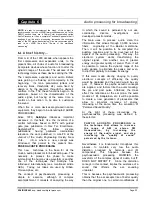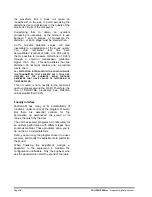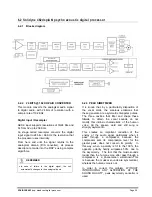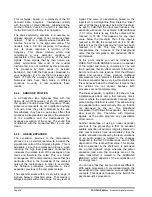
SOLIDYNE 462
dsp – broadcast digital processor
Page 11
S/PDIF:
You can connect an S/PDIF
output to the AES3 input of
462dsp/AM using an S/PDIF to
AES-3 adapter. The figure shows
a compact adapter XLR BNC.
AES-3 output
has a resolution of 24 bits with a
samplerate selectable between 48/96 KHz (see
“3.2.2 – Output Setup”). The connector is male
XLR.
AES3 input and output cables connect as
following:
XLR
Signal
1
GND
2
AES3 (1)
3
AES 3 (2)
AES-3 standard connection
2.5 Console MICstart
With the 462dsp/AM the current processing
program can changes when the study
microphones activates. In this way you can use a
processing specially done for voices. The default
adjustment for voices is the program “09: Voice
Impact“. Obviously; you can copy and customize
this program.
The commutation takes place when grounding the
MICstart input. When this happens the processor
exchanges the program and the access from the
JOG wheel is blocked. When the MICStart input is
opened, 462dsp/AM returns to the previous
program.
“Console MICstart” uses a connector RCA type.
With consoles
Solidyne 2300 series
, MICstart is
connected directly to the
Digisolid
output of a
microphone channel (please refers to the manual
of the console). In other consoles, the control can
be solved using the tally signal to activate a relay.
Connect the relay contact directly to the RCA “MIC
Start”; and the coil in parallel to the tally light.
The
relay coil voltage
depends on the
voltage gives by the console.
When the relay receives tension, the contact is
closed activating the Mic Start function in the
processor. The voice’s program remains active
while the contact is closed.
This feature comes disabled from factory.
In
order to use it, you must enable the option “MIC
PROCESSING” in the processor setup (see “3.2.3
- Processor Setup”).


























